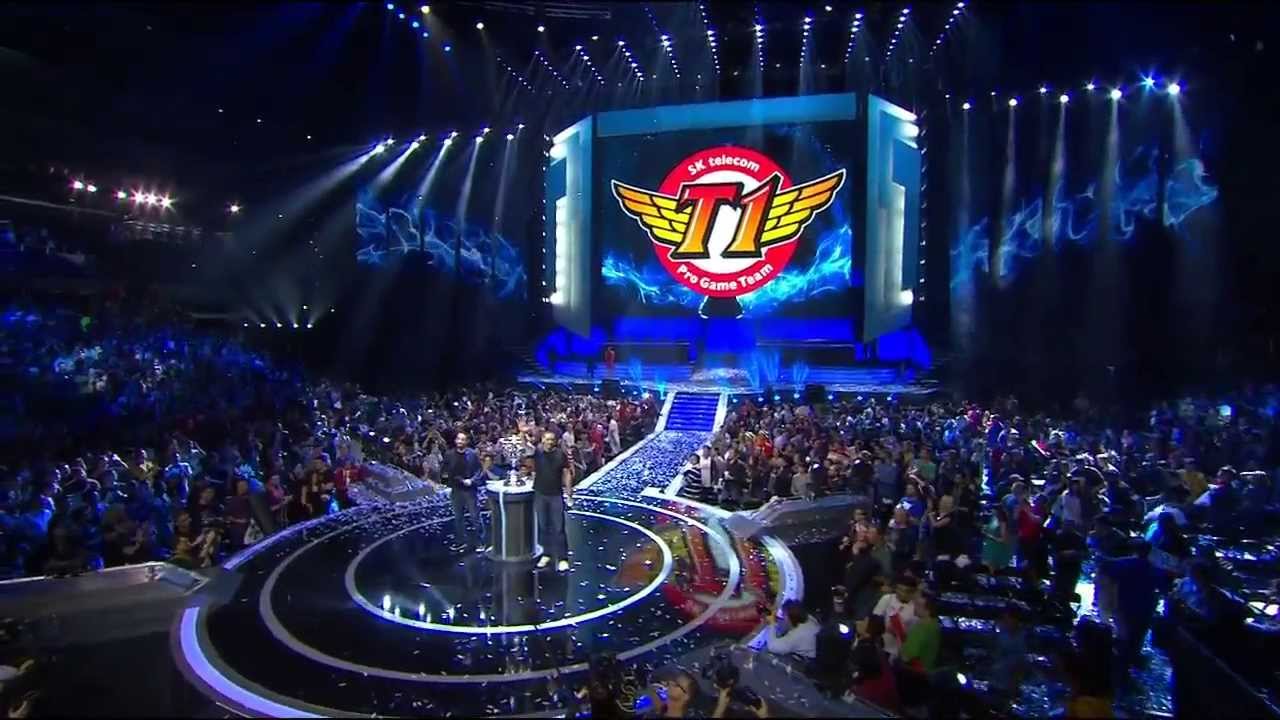There is no denying that League of Legends is the most popular game in the world. According to numbers released in January of this year, more than 67 million people play League each month, with more than 27 million playing each day. Never before has a single game seen popularity on this scale. While League of Legends is a remarkable game, nothing becomes as popular as it has without effective marketing. Thankfully for Riot Games, one of the best marketing schemes in the world seemed to fall right into their lap. This marketing scheme is eSports.
Competition Draws Competitors
For those not in the know, League of Legends is a Multiplayer Online Battle Arena (MOBA) game where two teams of five players compete. Each player controls a champion and works with their team to destroy the enemy base. At its core, League is a competitive game, and as gamers are wont to, players immediately tried to become better at the game than everyone else. Soon enough teams formed and tournaments started popping up. At first, these tournaments were largely local and had small prize pools, but as the game rose in popularity the size of the tournament purses rose accordingly.
This early phase of League of Legends’ life culminated in the Season 1 World Championship. This tournament was the first international event organized by Riot Games and boasted a prize pool of $100,000. A European team, Fnatic, walked away the victors, and thus began Riot’s quest to promote their game through its competitive scene.
Just four months later, Riot Games announced that they would be providing $5 million in prize money to tournament organizers in season two, raising the stakes of the competitive scene to unseen heights. Teams traveled around the entirety of the United States, Europe, and Southeast Asia to attend tournaments, gain experience, and to qualify for the World Championship and a shot at its $1 million grand prize.
Each tournament saw more viewers than the last as more and more players found the game and began watching the competitive scene. This culminated in the Season 2 World Championship, contested at a sold out Galen Center in Los Angeles California. More than 7.5 million viewers watched the tournament, which was eventually won by the Taipei Assassins.
The hype these tournaments brought Riot something even more valuable; players. One month after the Season 1 World Championship, League of Legends was played by 4 million people monthly, and 1.4 million daily. Four months later, just as Season 2 began, these numbers had ballooned to 11.5 million monthly and 4.2 million daily. By the time the Season 2 World Championship rolled around, these numbers had rocketed, nearly tripling to 32 million monthly and 12 million daily. Riot’s investment had obviously paid off.
Riot once again doubled down on the professional scene, announcing the creation of the League of Legends Championship Series. A professional league where the top teams in the world would play games each week, earn a salary, and eventually compete in Season 3’s World Championship. This brought unheard of stability to eSports, providing viewers with a predictable schedule and players with a regular income.
Again, as more people tuned in to watch the professionals play at the highest level, player numbers rose. As mentioned above, more than 67 million players were active monthly, with more than 27 million active daily.
Conclusion
The point of all this investment in eSports is two fold. First of all, eSports is a largely new phenomenon as far as mainstream consciousness of it goes. By providing a regularly schedule way for people to watch it, with stakes worth playing for, they are providing a showcase for their game and keeping it in the forefront of people’s minds. They have used this to their advantage with showcase matches for their novelty game modes such as “Ultra Rapid Fire” drawing people who saw the unconventional game modes into trying it for themselves.
Second, people desire fame, glory, fortune, and competition. By showing people that they can attain these things through their game, they are drawing them to the game, encouraging them to play and practice to become the best. Better yet for Riot, by its nature as a team game, new players will naturally bring their friends with them, growing the player base further.
Riot Games has managed to produce an incredible game and have been lavishly rewarded for doing so. Very few games have managed to capture the combination of skill, teamwork, and strategy that League of Legends requires, but it is the company’s investment into eSports that has catapulted their game to the top.

